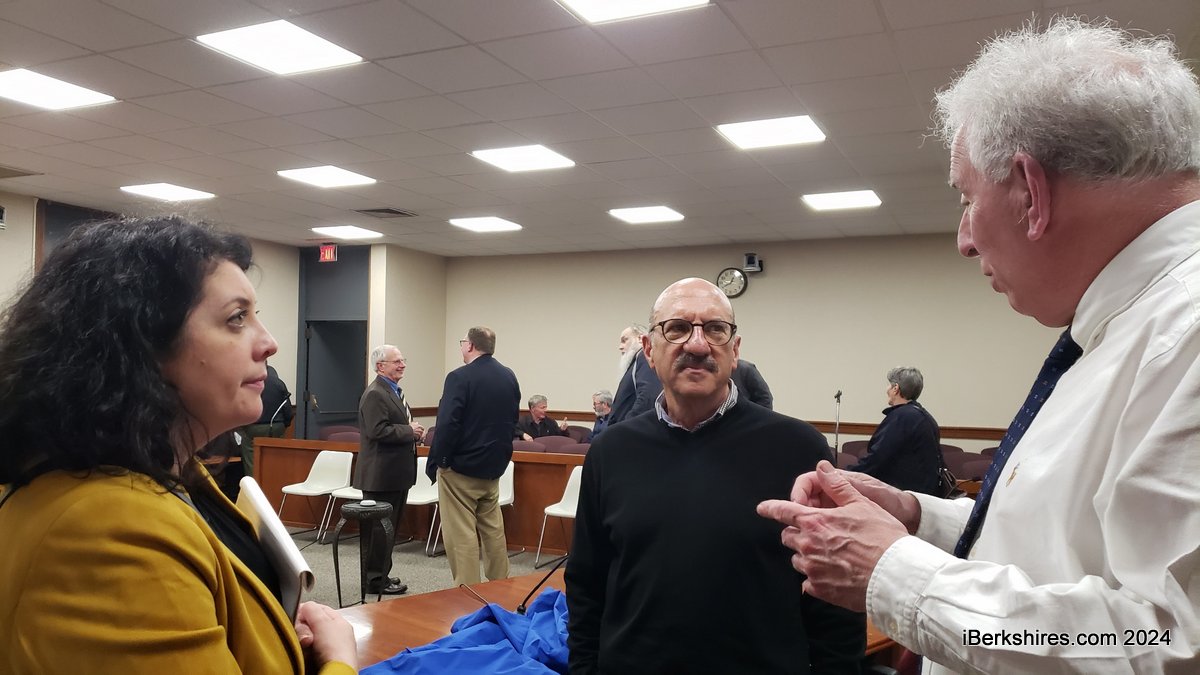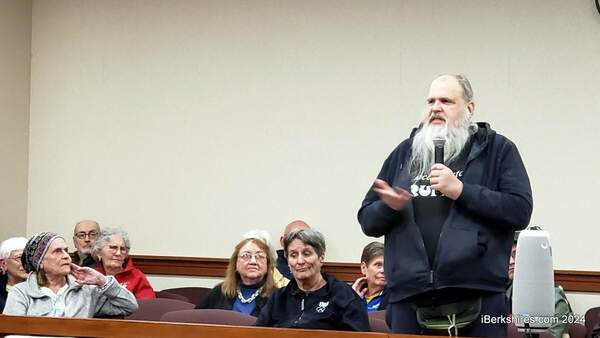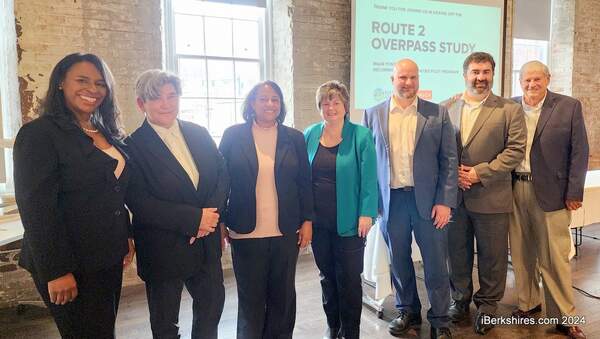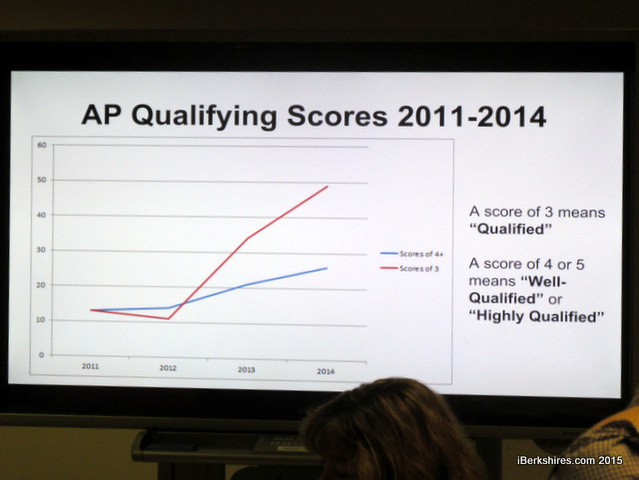
Drury High Raising Graduation Rates, Career Readiness
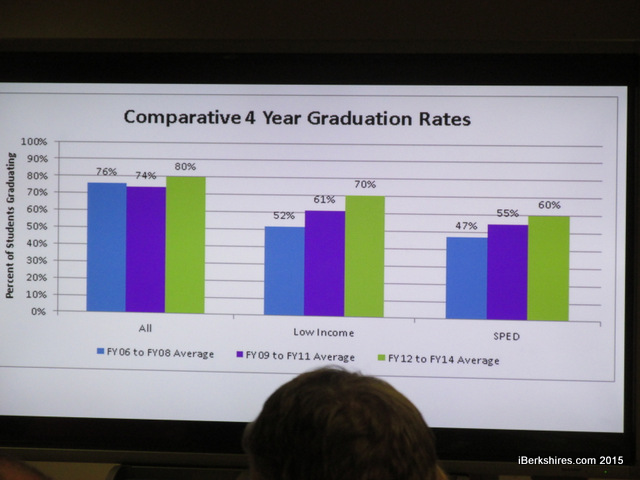 Drury has seen graduation rates rise in its low income and SPED populations. Drury has seen graduation rates rise in its low income and SPED populations. |
NORTH ADAMS, Mass. — Drury High School is graduating more students, and more who are better prepared for college and career.
Between fiscal 2006 and fiscal 2014, the school has seen an overall uptick to 80 percent of all students graduating; but rates for disadvantaged populations have jumped 13 percent to 18 percent.
"What you can see, especially for the low-income and special-education population, is graduation rates have grown dramatically ... triple or double what the state achieved over that period," Jean Bacon, administrator of teaching and learning, told the School Committee on Tuesday night. "They are sort of doing the same larger work around graduation coaching and pouring a lot of money into districts to do this, and we've achieved double or triple the results for our low-income and special-education students.
"But we're looking at those rates and saying it still isn't enough."
Bacon, Principal Amy Meehan and Assistant Principal Timothy Callahan reviewed some of programs used during the past six years to grow graduation rates and some of the initiatives in place to continue on efforts to reduce dropouts and engage students. Some of these efforts are being showcased by the state Department of Education.
"We don't just want them to graduate, we want them to be prepared for college and career," Callahan said.
Meehan said Drury dropouts had been at 8 to 10 percent compared to the state average of 3 to 4 percent. But the state at the time of education reform had been more focused on developing academic benchmarks through the Massachusetts Comprehensive Assessment System.
About 10 years ago it began to look at graduation rates, rather than dropouts, for cohorts starting in 9th grade.
"What we discovered around that time was that 76 percent were graduating," Meehan said. "But for low-income students or students with disabilities, we were only around 50 percent."
Educators began looking into what was preventing students from graduating and developing programming to address barriers. Meehan said not all initiatives worked but "we knew we had pockets of success." The difficulty was coordinating course offerings, funding and transportation issues — the Positive Options program, for example, was held at Berkshire Community College and could only support 12 students.
Out of that came the 21st Century After-School program and consolidation of other programs to "take an aligned and more cohesive approach."
More options for academic success were provided, such as the online learning lab that started as an extracurricular activity for 58 to help recover credits in failing subjects to serving 115 at all levels during school hours. The off-site E3 Academy, an intimate, "competency based" program brings students into connections with potential career pathways.
The school district in 2011 obtained grant funding for dropout prevention and began using graduation coaches. It took a couple years to fine-tune the approach, said Meehan, but in this last year of the grant, some 60 students are being helped by two full-time graduation coaches.
"They're really serving as that adult advocate, connecting with teachers, helping with problem-solving strategies, time management, kind of career counseling, connecting the dots with service agencies outside of the school," she said.
The key was listening to the students to find out what the obstacles were to their success, Bacon said.
It was also challenging them, said Callahan.
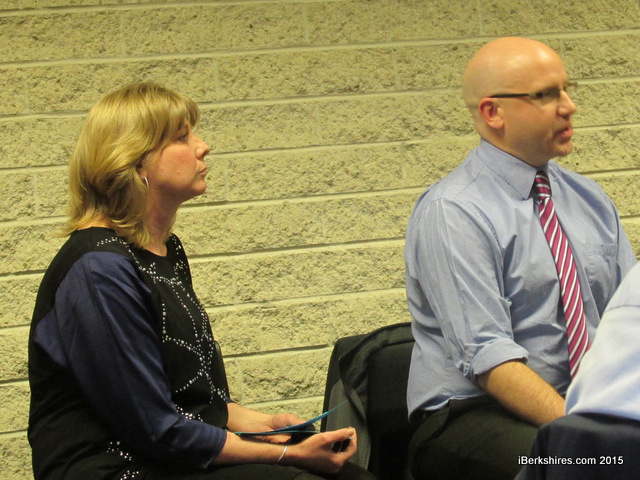 Principal Amy Meehan and Assistant Principal Tim Callahan explain some of the programs in place to reduce dropouts and raise expectations. Principal Amy Meehan and Assistant Principal Tim Callahan explain some of the programs in place to reduce dropouts and raise expectations. |
He'd been teaching an English Comp 9 course for students not expected to go to college. There were low expectations for those students, and they performed accordingly. And when they failed, they'd have to do summer school or take the course over.
"I would have some of those kids for two or three times," he said. "They would never gain traction."
The closure of Conte Middle School and relocation of the 8th Grade to Drury led to revamping of some courses, and course levels were removed. Expectations were raised and "even though we got rid of the comp levels, we had lower failure rates," Callahan said. "The students were more engaged."
The upper grades also tended to "plateau," he said, after the 10th grade MCAS test because it was the last benchmark before graduation.
"We don't just want them to graduate we want them to be prepared for college and career," Callahan said. The solution was bringing on the non-profit Mass Insight Education to accelerate the school's Advance Placement program, which led to more courses and far more students signing up.
"Our results were extraordinary," he said. "For years, we were below the national average ... we saw the results skyrocket past the national average, past the state average."
Drury also opened its College and Career Center last fall, a full-time dedicated space for researching careers, applying for colleges and seeking guidance.
Bacon said the school has brought in $580,000 in outside grants to help fund these programs, saving the district an estimated $380,000 over the past three years. Grant funding is declining, however, she said, "we've gone a long way to making these programs sustainable by reallocating funds."
School Committee member Lawrence Taft said the school system gets a lot thrown at it about its ratings on the Internet so it was good to hear of successes.
"Not only are we getting more graduating students, but the quality of the kids we're putting out are even better," he said. "It's good to see this good stuff."
"It was just good to see that the moves and the program direction that we started some now seven years ago are now in full swing or 70 percent of where we want to be," Superintendent James Montepare said. "And fall right in line with where education in the commonwealth is."
Tags: AP course, Drury High, graduation rates,

